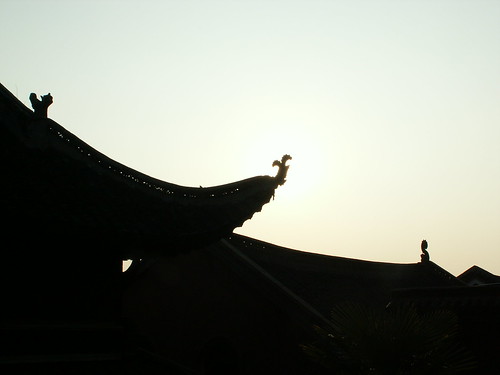 People often ask why we do chi gung sets in certain numbers. Whenever I've heard Bruce Frantzis answer that question, he tells a story about these elaborate experiments they run in the Taoist monasteries, over generations, with control groups and varying repetitions, to see what the optimal number of repetitions for each exercise is. I always feel bad for the monks who spent their lives doing a few too many of each exercise.
People often ask why we do chi gung sets in certain numbers. Whenever I've heard Bruce Frantzis answer that question, he tells a story about these elaborate experiments they run in the Taoist monasteries, over generations, with control groups and varying repetitions, to see what the optimal number of repetitions for each exercise is. I always feel bad for the monks who spent their lives doing a few too many of each exercise.
In my own personal experience, there is a subtle shift in feel as you go through, often, 20 repetitions of an exercise, that leaves you with just the right feeling at the end. Here's how I break it down when I practice to get the most out of each set:
- Reps 1-5: You're just settling in to your practice, so these first few have to be lighter. You should focus on the shape of the movements with the arms, legs, or spine. Instead of trying to activate deep stretches, explore more superficial layers, like gentle stretches along big planes of fascia. You should make sure that the joints are moving smoothly and timed together properly (e.g. all of the leg joints are bending in unison as you squat)
- Reps 5-10: Start looking for the natural pumps, pulses, and springs inside the body that are waking up. On any given day, one layer of the body is going to be more active than another. Sometimes you'll feel the joints and ligaments activate and you'll focus on bounce and spring. At other times, tissue turning or twisting will be very pronounced, so you'll emphasize the winding and unwinding. At other times still, energetic flows might be very obvious, so you can follow and amplify those. In this rep range, though, you are not trying to do anything to whatever is active in the body, you are only listening to discover what it is today.
- Reps 10-15: Once you've tuned in to the most active system in your body, you start to "turn up the volume" on it. There are several strategies for doing this, but the simplest one is to have a clear passive and active phase mapped on to the movement. When we open and close the joints, for example, in a circling hands exercise, the best way to amplify the natural rhythm of the pulse is to actively close and then passively let the joint open (you can reverse this pattern too). By "letting go" for an entire phase of the movement, you are more relaxed throughout, and the natural capacity of your body has room to expand.
- Reps 15-20: On a good day, you've found something to tune into, you've amplified the natural pattern, and now you're cruising along. Somewhere in this range, you sit back and "ride the rhythm". Instead of actively driving the process, your goal is to be able to let pattern run itself through your mind and body. Occasionally, you'll have to go back and amp it up like the earlier stage, but you're constantly testing to see if you can let go completely and let the pattern go on its own. This is often where lots of releasing and letting go happen, but you can't get sloppy and let the shape of the movements or your internal structure fall apart. That's why you are playing this edge between directing and letting go.
- Integration: While we've been talking about repetitions and doing exercises, you also need a little space to not do anything at the end. If you don't create so space to let you mind and body integrate at the end of a practice session, all the energy that you've worked to build in the active phase of your practice gets blown off. You need a brief period to settle and store. Often, this can be one of the most relaxing parts of your practice, because you are also making a smooth transition back to the outside world.
Because each phase of these repetitions has a different feel and a different goal, I consider this a set-wide rhythm practice like the other ones we've explored in this series. One of the benefits of teaching 15-20 hours a week over the past 6 years is that I regularly take groups of people through this particular version of rhythm training again and again, enough so that I have a clear feel for the pattern. I encourage you to look for the same one in your own practice.

Share this post
Twitter
Google+
Facebook
Reddit
LinkedIn
StumbleUpon
Pinterest
Email